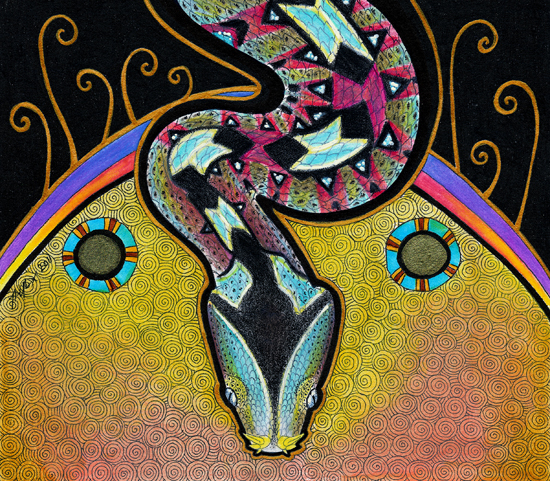Rhinoceros Viper – Flash in the Pan
Keywords:
Flash in the pan. Wait for it. Moments of brilliance. Rainforest magic. Swamp magic. Dazzling and dizzying. Beauty as camouflage. Giving ample warning. Light and dark together. Friend to uncertainty. The liminal between light and shadow. Visual confusion. Trust your instincts. Strike once, strike true. Respect what you fear. Boundary, curses and contracts.
Description:
The Rhino Viper, also known as the River Jack, Butterfly Viper and specifically Bitis nasicornis (for specificity) is a brightly coloured, stout viper known for its nasal horns. It is brightest and at its most vivid after shedding its skin. Usually around 80 centimetres in length but can grow to as long as 1.3 metres. After this, silt accretes onto its scales and dims its colouration. It’s most similar to the Gaboon Viper, but its velvet-like pattern is more colourful. It is a nocturnal, terrestrial snake found in rainforests, swamps and plantations in West and Central Africa, however a semi-prehensile tail allows it to climb successfully into trees and shrubs, and it can also be found in watery environments.
The Rhino Viper is an ambush predator that takes advantage of rodent trails, hiding in leaf litter and camouflaging well, especially in dappled light. It will predate on rodents, other small mammals, frogs, toads and fish. It spends much of its time motionless. The Rhino Viper bears live young, instead of laying eggs. Its mild disposition means that despite its significant venom – it is one of the most dangerous snakes in Africa – it rarely bites, and will prefer to hiss or flee when disturbed. The complications of being bitten however can be life-threatening, as its venom is neurotoxic and hemotoxic. As of 2003, one death has been caused by a captive Rhino Viper.